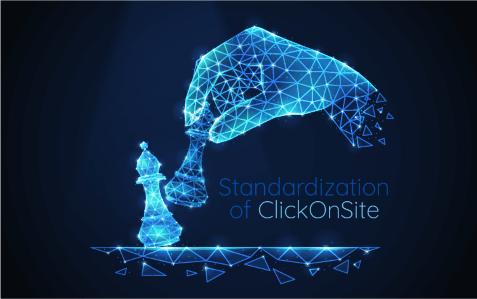Based on the Taylorian and Fordist principles, then influenced by Theodore Levitt, standardization is an international marketing strategy widely adopted by companies. The objective is to develop a product with identical features, based on market best practices, to meet consumers’ needs. However, this marketing approach is gradually reaching its limits when customers express a strong need for personalization.
In light of this, how can a company reinvent its offer? Olivier Lespinasse, a telecoms expert at IT-Development (ITD) for almost 15 years, tells us how ClickOnSite software will soon provide a more attractive and high-performance customer experience by adopting a hybrid approach combining low-code and standardization.
Standardization of a low-code platform: the main challenge
With the ClickOnSite V1 software, we had already experienced a 100% standardized product management. Our conclusion was clear: despite its good performance, this model was too time-consuming when a modification was required. Based on a traditional coding model, core teams spent an average of 2-3 weeks to make any changes. This isn’t a cost-effective approach for either the company or the customer.
In 2014, ITD redesigned its tool and opted for a low-code offer. ClickOnSite V2 then became an easily configurable software package, offering an endless number of combinations. Unfortunately, experience has shown that this configuration, easily accessible to everyone (Business Analysts or certified customers), generates a higher human error rate. To overcome this problem, a compromise has been found: a version of the software that skillfully combines standardization and customization.
Sharing telecoms best practices
From October, our new customers will benefit from a “standardized” version of ClickOnSite V2. The solution will meet two major market expectations:
- To benefit from a typical, reliable, and qualitative repository for the management of telecom infrastructures and business processes
Telecom experts regularly request an update on industry best practices. Some of our customers admit that they don’t have time and manpower to create and think about efficient business processes. During our 30 years of experience in telecoms and IT, we have carefully studied the market. We have defined a list of common terminology to avoid contradictions, confusion, and communication problems. We have also built up a base of structured business processes, covering the critical actions of MNOs and towercos: deployment, site updates, etc. - Offering high-performance software with a competitive price
This hybrid approach also allows us to diversify our targets. While small budgets will benefit from a complete offer at a reasonable price, major accounts will also be able to go further by subscribing to customized add-on modules.
Improving efficiency to offer a better quality of service
Besides the benefit to our customers, the adoption of standardization is also favorable for the company:
- A driver for innovation
Thanks to standardization, Core teams benefit from less human error, lower maintenance, etc. They can spend more time on R&D to make new improvements or design new features. - Enhanced quality of service
Business Analysts can also bring more added value. This includes more attention to customer specificities, more robust training support, greater work on data, etc. - Significant economies of scale
Finally, by implementing the software three times faster, Business Analysts will also be more available to increase their customer portfolio!
As a result, it is clear that a hybrid standardization choice is profitable for both customers and companies. The key is to determine the right balance so that everyone can feel at ease.
